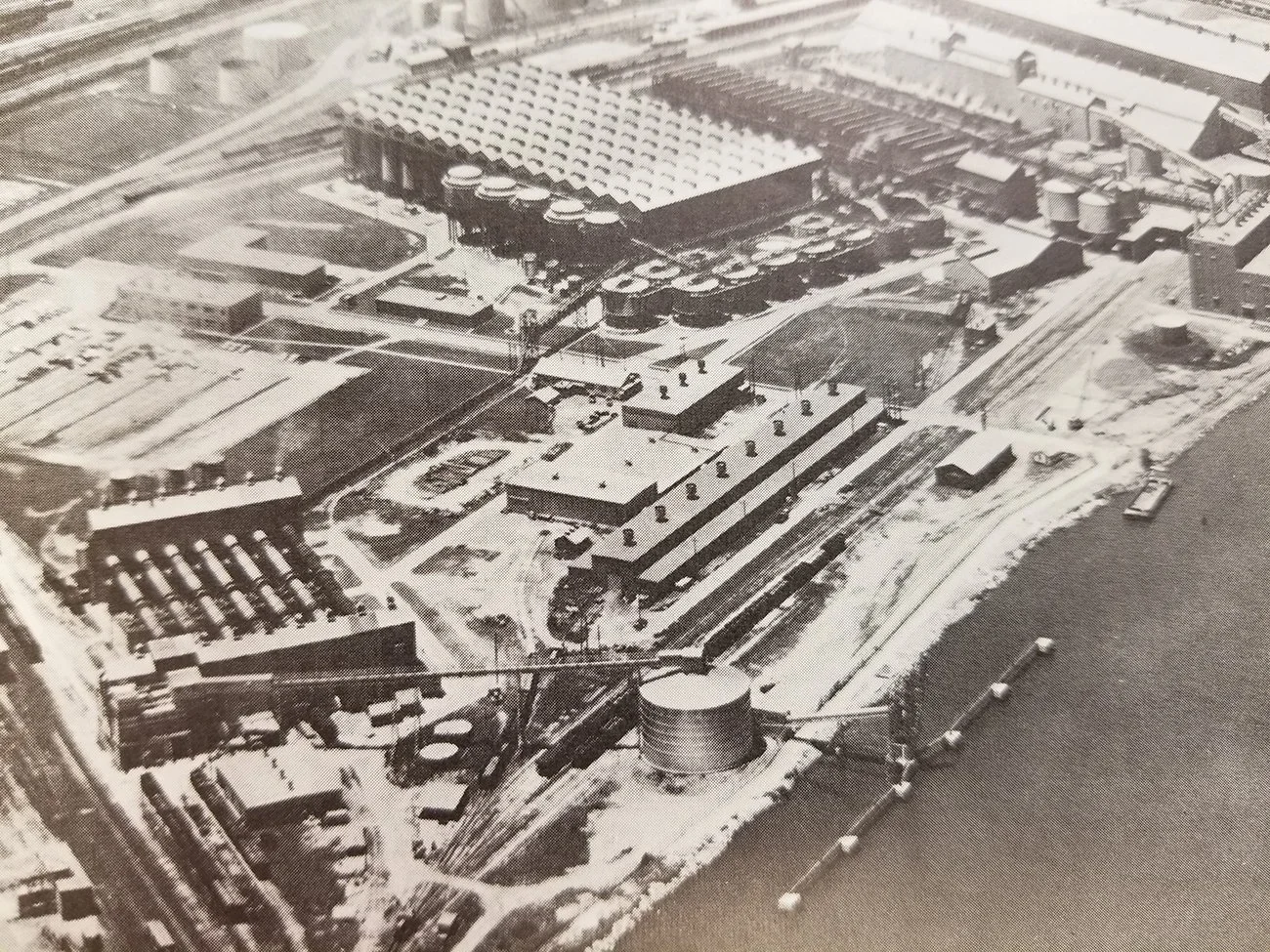Aerial View of Alcoa Plant in Mobile Alabama, photograph (Mobile , 1937), Mobile. Mobile Public Library Collections
Aerial photo of Mobile, with Down the Bay to the left, during the Bankhead Tunnel Construction. Erik Overbey Collection, The Doy Leale McCall Rare Book and Manuscript Library, University of South Alabama.
PRE-WAR ERA
In the years leading up to World War II, Mobile, Alabama, was a city deeply scarred by the Great Depression. The 1930s hit Mobile hard, and lower-income communities like Down the Bay suffered the worst. Unemployment ravaged neighborhoods, and the number of small businesses declined by nearly 66% between 1930 and 1940. Census records from the period offer a human dimension to these grim statistics. For instance, when Mobile’s teachers went three months without pay, it placed an enormous strain on families.
Despite the hardships of the Depression, the seeds of Mobile’s economic revival were quietly being planted before the war. Industries began to recognize the city’s strategic advantages, including its port facilities, five major railroads, and access to inexpensive gas and electricity. In 1937, the Aluminum Ore Company (a subsidiary of the Aluminum Company of America, or ALCOA) agreed to lease a site at the state docks, which had originally opened in 1928. Their $4 million plant became one of the nation’s three largest aluminum producers, shifting Mobile’s primary import from bananas to bauxite. Meanwhile, waterfront facilities such as the ALCOA plant also produced aluminum materials that were sold to European countries and Japan, even as global tensions mounted.
By 1940, Mobile was still, at heart, a moderate-sized sleepy southern town, known for its French colonial heritage, its scenic bay, and its traditional Mardi Gras celebrations. Life moved at a slow pace, and the community retained a strong Roman Catholic influence. But World War II would soon shatter that old identity. As Melton McLaurin and Michael Thomason observed, "No American city underwent such drastic, sweeping change as a result of the Second World War as did Mobile" (Mobile: The Life and Times of a Great Southern City, 1981, p. 123).
With the opening of the Bankhead Tunnel in February 1941 a $4 million project that connected Mobile with the eastern shore the city became even more accessible to workers and shoppers. When defense jobs became available, thousands of people, many from the struggling rural farms of Alabama, Mississippi, Georgia, and west Florida, poured into the city. Mobile's population exploded from 114,906 in 1940 to 201,369 by 1944 — a staggering 75% increase. To the farmers and unemployed laborers of the South, Mobile represented a beacon of opportunity, a mecca for those desperate to escape the long shadows of economic hardship. However, the city was woefully unprepared for this sudden influx, and struggled to provide even basic services to its swelling population.
Thus, on the eve of World War II, Mobile stood at a crossroads: a city scarred by the Depression but poised for one of the most remarkable transformations in American history.
A family travels through Mobile in search of work at the height of America's Great Depression. Erik Overbey Collection, The Doy Leale McCall Rare Book and Manuscript Library


